

 It is time for les primeurs, whether you like tender asparagus or Bordeaux wines. So there has been much focus lately on the vintage 2012. A vintage that is still resting in the chateaux cellars. But during a few days in April it was tasted by wine merchants and wine writers from all over the world. Most of the chateaux have now announced their prices for the 2012 vintage. So the wines can now be reserved and bought but not delivered until they have spent enough time in the oak barrels, in approximately 2 years’ time.
It is time for les primeurs, whether you like tender asparagus or Bordeaux wines. So there has been much focus lately on the vintage 2012. A vintage that is still resting in the chateaux cellars. But during a few days in April it was tasted by wine merchants and wine writers from all over the world. Most of the chateaux have now announced their prices for the 2012 vintage. So the wines can now be reserved and bought but not delivered until they have spent enough time in the oak barrels, in approximately 2 years’ time.
It is inevitable that you focus on the vintage when you talk about high quality Bordeaux wines that many buy in order to keep in their cellars for a number of years or to sell with a profit. But for ordinary consumption, I don’t think you should bother too much about vintages. Or, more accurately, you should not let a vintage chart decide what you are buying. If you like a producer you should trust that he makes good wines also a difficult vintage. Sometimes wines are powerful, sometimes fruiter and easy to drink. Vintages are not good or bad, only different. In the case of Bordeaux, we can even be thankful for the years that are considered “bad.” It means that they mature faster and become enjoyable earlier than the “better” vintages. Often they are cheaper and perfect wines to order in a restaurant.
2012 seems to become a vintage that is much better than what was once feared, even very good. In addition, prices seem to have a downwards tendency. On the other hand, that only means that they are approaching the prices they were at a couple of years ago. Except for some, who are raising the price substantially. That is primarily the case for those that were fortunate enough to be upgraded in the Saint Emilion classification. That is an excellent illustration of the consumer benefits of a classification: prices skyrocket. One can really wonder what good the classifications are for wine lovers and consumers…
Britt & Per
PS: Recommend to your friends to read the Brief!
What’s on at BKWine Tours
- Bordeaux, 18-22 September
- Douro Valley, Portugal, 23-27 October
- South America: Chile and Argentina, 1-16 February 2014
- South Africa, 28 February – 10 March, 2014
For more information please contact us on email or on phone (we’re on French time), or go to our wine travel site on www.bkwinetours.com!
We also make custom designed wine tours – on-demand tours for you and a group of friends, for your company (maybe to scout new winegrowers?), for a special event… We can combine winery visits and wine touring with other activities: gastronomic workshops, visit to an oyster farm, truffles hunting, cheese making, and more. More info on the custom designed and bespoke BKWine wine tours and travel here!
Wine tours in Finnish: We also do wine tours in Finnish. And in German, Norwegian, Spanish…
Do you want the latest news and updates on our wine travel activity? Subscribe here! (Second alternative BKWineTours.com)
From the World of Wine
14 organic wines that we recommend
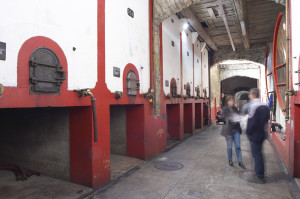 It is just as important for an organic wine as for other wines that they taste good. Also organic wines should primarily be judged on their taste. However, some give them an automatic upgrade just because they are organic. Perhaps more curiously, some other tasters seem to be more critical to a wine if it happens to be organic. There are good and there are bad examples of organic wines, just like for other wines.
It is just as important for an organic wine as for other wines that they taste good. Also organic wines should primarily be judged on their taste. However, some give them an automatic upgrade just because they are organic. Perhaps more curiously, some other tasters seem to be more critical to a wine if it happens to be organic. There are good and there are bad examples of organic wines, just like for other wines.
We have had the occasion to taste the range in Sweden where there are not an awful lot of them. But we have found quite a few nice ones and many of those wines are available on other markets too. We have made a list, with tasting comments, of 14 organic wines that we recommend. Here’s the article: Our organic favourites, a selection of good wines.
Åsa’s Wine of the Month: Chianti Classico Montecalvi 2009
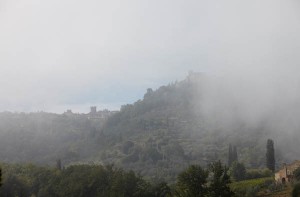 A lovely Chianti Classico from a small organic wine producer with only 3,5 hectares just outside the village of Greve in Chianti in Tuscany. Azienda Agricola Montecalvi Chianti Classico is made from 90% sangiovese and 10% canaiolo.
A lovely Chianti Classico from a small organic wine producer with only 3,5 hectares just outside the village of Greve in Chianti in Tuscany. Azienda Agricola Montecalvi Chianti Classico is made from 90% sangiovese and 10% canaiolo.
Canaiolo is a local variety from Tuscany. It is a grape that gives spiciness and a peppery note to the wine. The taste is full and warm with a fresh acidity in the background. It has pleasant notes of wild herbs like rosemary, juniper and cherry. A wine to enjoy with a pasta or grilled meat. www.montecalvi.com, price: 15 euro.
Rebel wine fair with high quality Champagne
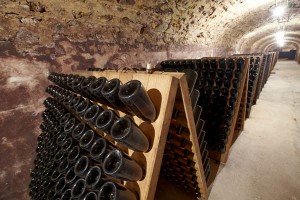 At the same day as the big Champagne day in Stockholm a Champagne day OFF was arranged by a few importers of small, high quality champagne producers.
At the same day as the big Champagne day in Stockholm a Champagne day OFF was arranged by a few importers of small, high quality champagne producers.
BKWine’s Peter Dybeck tasted and commented champagnes from Françoise Bedel and Pierre Larmandier, both biodynamic, and several others. Read more here Champagne Day OFF 2013: favourite champagnes.
Can many different varieties in the vineyard prevent diseases?
A winemaker in Languedoc, Jeff Coutelou at Mas Coutelou, has his own recipe to avoid diseases in the vineyard. He has a lot of different varieties planted in the same vineyard. It protects the vines from viruses, he says, and makes them less susceptible to other diseases.
Read about Jeff Coutelou on Drinks Business.
In the past, wine producers often had many grape varieties planted in the same vineyard (“en foule” it is called in French). Now this is considered as inconvenient but who knows, old habits may return.
The Wine Forger’s Handbook – the story about fake wines
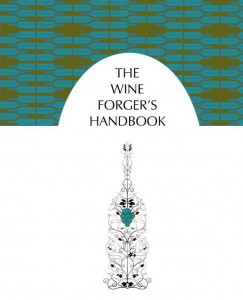 Wine writer Stuart George and best-selling art crime expert Dr. Noah Charney has recently published “The Wine Forger’s Handbook”. Here is what Stuart says about the book: “Fine wine is a multi-million dollar industry and is fraught with peril. From fake bottles to fraudulent contents, from mislabelled wine to misled consumers, wine has been faked, forged, and used for fraud for as long as it has been consumed. This eBook provides a brief history of forgery and fraud in the fine wine world, including case studies on Rudy Kurniawan and Hardy Rodenstock.”
Wine writer Stuart George and best-selling art crime expert Dr. Noah Charney has recently published “The Wine Forger’s Handbook”. Here is what Stuart says about the book: “Fine wine is a multi-million dollar industry and is fraught with peril. From fake bottles to fraudulent contents, from mislabelled wine to misled consumers, wine has been faked, forged, and used for fraud for as long as it has been consumed. This eBook provides a brief history of forgery and fraud in the fine wine world, including case studies on Rudy Kurniawan and Hardy Rodenstock.”
The Wine Forger’s Handbook also functions as a guide, both on how fraudsters have been found out, and tips on how to avoid being fooled in your own wine purchases. Hopefully it will not provide people with too many tips on how to become a fraudster yourself!
The book, says Stuart, “is for everyone who enjoys true crime stories of forgery, deception, and detection set against the vivid backdrop of the world of wine”.
If you would like to buy the book: The Wine Forger’s Handbook.
Stuart is also a guest writer on BKWine Magazine.
Divico, new fungus-resistant grape
A new grape has been born in Switzerland, developed by the research institute Agroscope Changins. The Swiss are good at developing environmentally friendly grapes and this new grape, called Divico, has good resistance to both grey rot, mildiou and oidium.
The grape is a cross between two grapes: gamaret and the hybrid bronner. With Divico the research institute wanted to obtain a grape that has the quality characteristics of a vitis vinifera and the resistance to fungal diseases of the American vitis rupestris. Remains to be seen what the consumers will think of this new grape. New grapes, and especially hybrids, are always a hard sell.
Read more on mon-viti.com
Replacing sulphur
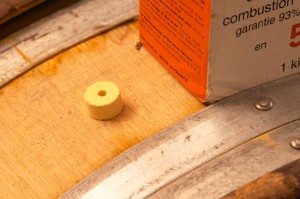 Is it possible to replace the antioxidant and anti-bacterial properties of sulphur with a preservative made from grape seeds?
Is it possible to replace the antioxidant and anti-bacterial properties of sulphur with a preservative made from grape seeds?
Yes, that is the idea of Intergrapes in Italy after seven years of study. They claim that the preservative is as effective as sulphur and that the wine better retains its natural flavours. Moreover, says Intergrapes, the wine can be aged for a longer period than a wine with no sulphur.
The preservative is made from polyphenols found naturally in grape seeds. The solution is added to the must and wine during the vinification.
Studies have so far been made only by Intergrapes and we look forward to hearing other opinions about this new preservative.
Read more here thedrinksbusiness.com.
A nice showing of Austrian wines
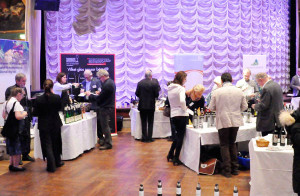 A number of Austrian wine producers were in Stockholm in March to present their wines to Swedish wine journalists and to wine importers. BKWine’s Magnus Reuterdahl was there and he found elegant and pure white wines and exciting red wines with character. Read his report here Austria: a selection of exciting wine producers.
A number of Austrian wine producers were in Stockholm in March to present their wines to Swedish wine journalists and to wine importers. BKWine’s Magnus Reuterdahl was there and he found elegant and pure white wines and exciting red wines with character. Read his report here Austria: a selection of exciting wine producers.
Some interesting facts about Champagne
Area in production: 33 350 hectares, of which:
- The growers own 29 900 hectares and
- The Champagne houses 3 400 hectares
Production: 320 million bottles, of which:
- The Champagne houses produce 219 million bottles,
- The growers 72 million bottles and
- The cooperatives 28 million bottles.
Number of “producers”: 5133, of which (not strictly speaking; it’s just the sum of the below):
- Champagne houses: 340
- Growers who own their land and bottle and sell their own champagne (so called recoltant-manipulant, RM): 2 016
- Growers belonging to a cooperative: 2 735
- Cooperatives: 42
Grape varieties:
- Chardonnay: 9 950 hectares (29,1 % of total surface)
- Pinot meunier: 11 000 hectares (32, 2 % of total surface)
- Pinot noir: 13 111 hectares (38, 4 % of total surface)
- Arbanne, petit meslier, pinot blanc, pinot gris: <0.02%
This really shows the importance of a good relationship between the growers and the houses.
Thank you Champagne Philippe Gamet for (most of) the figures!
Rui Falcão gives a master class about Portugal
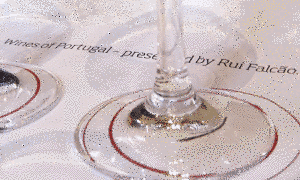 How and why is Portugal different from other wine countries? This was the theme of a master class given by the famous wine journalist Rui Falcão in Malmö a few weeks ago. There are six factors that make Portuguese wines different.
How and why is Portugal different from other wine countries? This was the theme of a master class given by the famous wine journalist Rui Falcão in Malmö a few weeks ago. There are six factors that make Portuguese wines different.
Our BKWine reporter was there
Read more here What makes Portugal different from other wine countries?
Good times for construction companies in Bordeaux
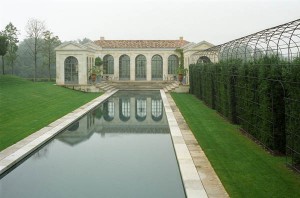 The Bordeaux chateaux are building new cellars as never before. The economic crisis seems to be long gone, at least in Médoc, Saint Emilion and Pomerol. Of the five Premier Grand Cru Classé chateaux three are currently busy renovating: Mouton-Rothschild, Latour and Margaux.
The Bordeaux chateaux are building new cellars as never before. The economic crisis seems to be long gone, at least in Médoc, Saint Emilion and Pomerol. Of the five Premier Grand Cru Classé chateaux three are currently busy renovating: Mouton-Rothschild, Latour and Margaux.
In 2011 Château Cheval Blanc in Saint Emilion inaugurated its brand new cellar. It is a futuristic creation looking something like a wave and it has attracted a lot of attention. This is of course one reason for building a spectacular cellar. Next to Cheval Blanc, Château la Dominique is busy with its own new cellar, planned to be ready for the harvest 2013. Rumor has it that it will be something like a work of art in the vineyard. Famous Jean Nouvel (l’Institut du Monde Arabe in Paris among many other things) is the architect. Château Carmes Haut-Brion in Pessac-Léognan has engaged the not less famous Philippe Starck for their new cellar.
The brand new chai of Château Petit Village in Pomerol has dramatically black concrete fermentation tanks and, in contrast, a pretty and colourful wine shop. Chateau Petrus, also in Pomerol, has been under construction for a while now and will be ready this summer.
Many of the new cellars are equipped with concrete tanks. The stainless steel tanks, are they history?
Wine events calendar
Send us an email if you have some event you want on the calendar.
Don’t be an egoist! Share with your friends and other wine enthusiasts! Forward the Brief to your friends! Suggest that they sign up for a free subscription !
© Copyright BKWine








